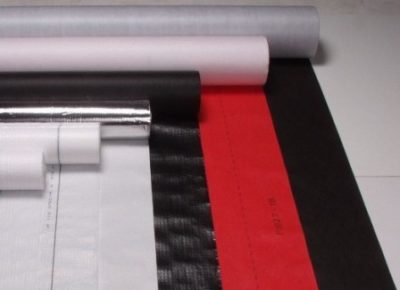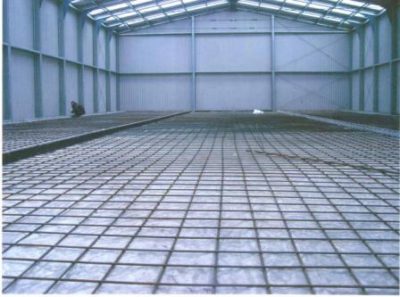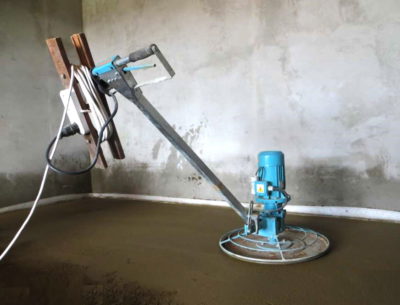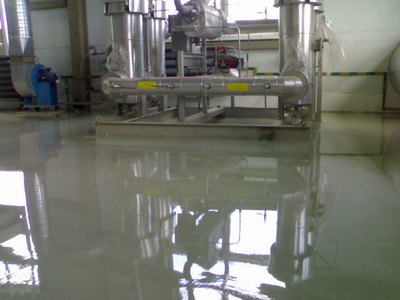The device of concrete floors - the procedure and their features
Concrete floors are simply necessary at some facilities: in warehouses, at terminals, in garages and others. That is, where a high floor load is expected, which another coating simply can not withstand. The popularity of this coating is also due to the fact that the device of concrete floors, although it requires compliance with the technology, is quite within the power for independent execution.
Concrete Floor Steps
Concrete floors have a number of requirements that they must meet: durability, high chemical resistance, tightness, resistance to stress, lack of dusting.
In order to obtain a concrete coating that meets all these requirements, it is necessary to fulfill two conditions: to use high-quality materials and to strictly comply with the technology, in which there are four main stages:
- foundation preparation;
- concrete laying in screed;
- surface finish;
- seam cutting, their sealing.
Floor laying can be carried out both on the existing cement concrete base, and on the ground.
The device of a concrete floor on the ground, although an economical, but rather laborious way of arranging the floor. It is advisable to equip in those places where it is dry enough. A well-made ground floor has a layered structure.
There are several options, but most often the ground floor cake looks like this:
- compacted soil base;
- river sand bed;
- layer of crushed stone or expanded clay;
- waterproofing;
- concrete screed (draft);
- vapor barrier;
- insulation;
- reinforced screed (fair).
If necessary, adjustments are made to this scheme, depending on the tasks and conditions. The technology for constructing concrete floors also depends on this. Such a floor requires careful preparation of the foundation.
Foundation preparation
When laying on an old concrete base, thorough preparation is carried out: the cracks are expanded and filled with a repair composition of cement-sand mixture or polymer. In places where the base cannot be repaired, it is completely removed and new concrete laid. Differences in elevation level, dust carefully removed.
Preparation of the soil foundation begins with leveling, which allows you to assess the amount of upcoming earthwork and determine the floor level. Then the soil is rammed using special machines, which allows to avoid further subsidence and cracking of the floor. Next, a “pillow” of river sand is laid and also rammed using rollers or rammers. In order for the pillow density to be sufficient, sand is laid 25% more, then moistened and only then compacted to the desired thickness. A layer of gravel or expanded clay is poured over the sand.
Waterproofing
Waterproofing on the one hand should prevent the absorption of moisture from the base of the concrete screed, and on the other, it prevents the penetration of moisture from the soil. It is produced using polymer membranes or roll materials, sometimes thick polyethylene is used without damage.

The waterproofing is overlapped with an overlap on the walls (15-20 cm), the joints are glued with tape.
Laying a concrete base (draft)
This layer plays the role of a base for waterproofing materials. The rough screed is made of the so-called “lean concrete”, using crushed stone (fraction 5 - 20). The requirements for it are not too high, because it fits quite simply. The thickness should be at least 40 mm, horizontal differences - not more than 4 mm.
Vapor barrier installation
A layer of vapor barrier materials (polymer-bitumen membranes are the best solution, but other options are also suitable) is laid on a rough concrete base.
Floor insulation
It is very important to evaluate how necessary this procedure is and what material for floor insulation is better to use. As a heater, it is preferable to materials resistant to moisture, or to ensure their good waterproofing. The most commonly used foam insulation is extruded polystyrene foam, mineral wool.
Laying the finish screed
Laying the finish screed takes place in several stages:
- Reinforcement (can be carried out using a road mesh, and at high loads it is better to use a frame of rods from 8 mm in diameter).
- Pouring concrete mixture (it is better to use the services of rented special equipment).
- Installation of lighthouses (lighthouse rails are installed approximately two meters apart, so that the ends of the rule can rest on them).
- Filling the floor (carried out 1.5 cm above the installed beacons).
- Leveling and compacting concrete with a vibrating rail or rule.
Surface finish
After completion of the process of laying and compacting concrete, a technological break is made so that concrete can gain strength. Depending on the air temperature and its humidity, it can be no less than 3 hours, but no more than 7 (the depth of the trace left on it should be 2-3 mm). During this period, coarse grouting of the floor is carried out using trowels or discs. A little later, when the depth of the trace left is equal to 1 mm, finish grouting is performed.
Sometimes, to get a stronger and more durable foundation, topping is used, a special mixture based on cement and other substances, which is rubbed into concrete. The use of special polymer impregnations can solve the problem of dusting.
Concrete joints
Screed concrete is a rather fragile material, oddly enough it sounds, and is prone to cracking. In order to limit this process, expansion joints are cut in a concrete screed. There are three types of them:
- insulating - are made in places where the floor comes into contact with all the structures of the building: walls, columns, and prevent the transmission of vibrations;
- shrinkage - relieve stress during drying and shrinkage of concrete, which occurs unevenly;
- structural - are made in those places where the contact of concrete laid at different times occurs.
Seams should be cut as soon as the concrete has acquired sufficient strength, but before the appearance of arbitrary cracks. The location of the seams is marked with chalk, they are cut in the sequence in which the concrete was laid. The depth of cut is approximately 1/3 of the thickness of the concrete screed. To facilitate the care of the seams and strengthen their edges, carry out sealing. The type of sealant is selected depending on the operating conditions and the expected load on the floor. Before sealing, the seam is thoroughly cleaned of dust and debris. After carefully performing all the steps, the screed is allowed to harden and dry.
Summary
Concrete flooring is a procedure that can be performed not only by professionals, but also independently.In any case, you should pay close attention to compliance with all stages of the process, some of the nuances and subtleties of which were highlighted in the article. This approach will result in a strong, durable floor that can withstand heavy loads and adequately copes with its task.







